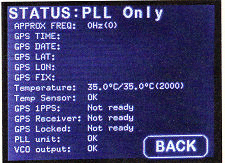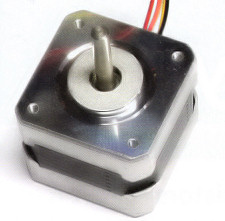October 2019
This month’s highlights
Programmable GPS-synced Frequency Reference (Part 1)
This advanced lab-standard frequency reference is an ideal companion for frequency counters, oscilloscopes and spectrum analysers in the test lab. It is synchronised to the 1pps signal derived from a GPS module and has three BNC outputs with programmable frequencies from 1Hz – to 100MHz.
The main oscillator is housed in a high stability temperature-controlled oven and its accuracy is around ±100ppb after 30 minutes. The design is based on a Micromite BackPack and has a colour touchscreen. In Part 1 this month, principles of operation are described.
![]() Surface mount design needs good soldering skills
Surface mount design needs good soldering skills
Digital Command Control programmer for Decoders
Digital Command Control (DCC) is a widely-used method for controlling model railways, especially when operating several locomotives on the same track.
 This DCC programmer is simple, cheap and easy to build using a handful of discrete components. It is based on an Arduino MCU with a custom shield, and operates from a computer USB port. The shield is compatible with open-source DCC++ Arduino software and it offers several more desirable options for programming features that will appeal to the model railway enthusiast. Our article also describes how DCC works.
This DCC programmer is simple, cheap and easy to build using a handful of discrete components. It is based on an Arduino MCU with a custom shield, and operates from a computer USB port. The shield is compatible with open-source DCC++ Arduino software and it offers several more desirable options for programming features that will appeal to the model railway enthusiast. Our article also describes how DCC works.
Opto-isolated Mains Relay
If you need to switch mains voltages or loads, say from a micro output or any other low voltage project, then it’s necessary to safely isolate the low voltage source from the mains side of things, which is exactly what this compact little project does.
The project utilises two opto-isolators to control a relay, and its printed circuit board is designed to keep the mains-side neatly terminated and easy to identify. The 10A mains contact set is fused and suppressed with a snubber network. The low-voltage side can be anything from 2.7-10V d.c. It’s an essential building block for all sorts of mains-power projects.
Using Stepper Motors (Part 1)
This special mini-series explores the fundamental principles of stepper motor operation and applications. They are universally used in rotational position and control tasks in everything from wristwatches to computer drives and machine tools. Part One describes some stepper motor basics, and the series culminates in a full 3-axis CNC controller.
Audio Out
Designing Hi-Fi mini-monitor loudspeakers (Part 2)
More practical considerations for designing and building monitor loudspeakers of the highest quality, focussing on the LS3/5A . This fascinating and superbly detailed mini series will be of great interest to the practical audio enthusiast and it describes in depth many of the practical design and component aspects that influence their construction.
Make It with Micromite (Part 9):
Introduction to MMBasic graphical commands
This primer for Micromite enthusiasts continues with an 8-page special on using software commands to control its IPS display module.
Also in this issue:
- The Fox Report – finding free 4K content via satellite
- Techno Talk – the threats posed to health and the environment by 5G radiation
- Net Work – celebrating 50 years of the Internet
- Circuit Surgery – Understanding bipolar junction transistors (Part 4)
- Electronic Building Blocks – more low-cost but very handy modules bought on the web, ideal for casual experimenters
- Max’s Cool Beans – Max spills the beans on metastability, and his ‘HRRG’ takes shape
Next month
Tinnitus and Insomnia Killer; GPS-synced Frequency Reference (Part 2); Electronic compass modules; Using Stepper Motors (Part 2); The Colour Maximite.

October 2019 files for download - 1019.zip
- Micromite MKC Clock
- Opto Isolator casework
- KEF data sheets/li>
- DCC sketches
- Circuit Surgery
Printed Circuit Boards
We supply PCBs for all our projects going back to 2013.
New PE service – Programmed PICs
Buy programmed PICs for most of our projects.










